Module 7.4 Treating Minor Injuries & Preparing For and Managing Emergencies
Learning Objectives
By the end of this module, you should be able to:
- List items to include in first aid and emergency kits.
- Outline the responses to minor cuts and scrapes, burns, broken bones, head injuries, bites, and foreign objects in the body.
- Discuss lost or missing child prevention and response.
- Explain response to unauthorized persons on the premises.
- Identify potential disasters and emergencies that early learning and childcare programs should prepare for
- Summarize the three phases of emergency management (preparedness, response, and recovery).
- Distinguish when to use each type of emergency response (evacuation, sheltering in place and lockdown).
Introduction
An emergency is a situation that poses an immediate risk to health, life, property, or environment. Most emergencies require urgent intervention to prevent a worsening of the situation. Some emergencies will be obvious (such as natural disasters), but others will require educators to decide if it truly is an emergency.
Once an emergency has been identified, it’s important to know what to do. This module introduces different first aid and emergency medical responses, the phases of a disaster, and more information about a few different types of emergencies.
Here is the Canadian Red Cross recommended list of supplies for a first aid kit:
- Emergency telephone numbers for EMS/9-1-1 and your local poison control centre
- Sterile gauze pads (dressings) in small and large squares to place over wounds
- Adhesive tape
- Roller and triangular bandages to hold dressings in place or to make an arm sling
- Adhesive bandages in assorted sizes
- Scissors
- Tweezers
- Safety pins
- Instant ice packs
- Disposable non-latex gloves, such as surgical or examination gloves
- Flashlight, with extra batteries in a separate bag
- Antiseptic wipes or soap
- Pencil and pad
- Emergency blanket
- Eye patches
- Thermometer
- Barrier devices, such as a pocket mask or face shield
- Canadian Red Cross first aid manual
(Canadian Red Cross, n.d.)
Minor Cuts and Scrapes
Before performing first aid for minor cuts and scrapes, educators should wash their hands and apply gloves. The cut or scrape should then be washed with cool water. The surrounding area can be washed with soap, but soap should not get into the wound. The cool water will wash away any debris that may be in the wound and will help blood vessels to constrict (become narrower), which helps to stop bleeding. Once the area is clean and the blood has decreased, place gentle pressure on the wound with a clean and sterile gauze pad. If the first gauze saturates with blood, add additional gauze pads. Gauze pads should not be removed, as this could cause any clots that have begun to form to be removed and bleeding to continue. When the wound has stopped bleeding, the cut or scrape can be covered by a clean bandage. Be sure to document the injury and communicate what happened with families.
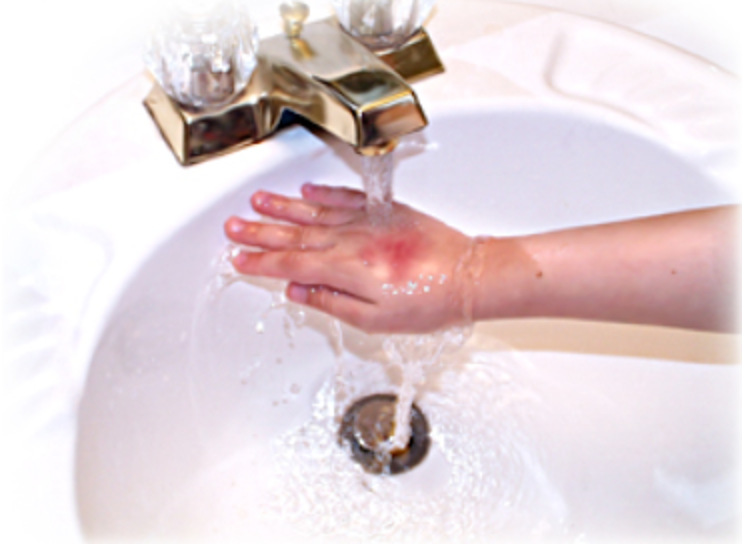
Burns
The treatment of burns depends on the type of burn (first, second, or third degree). The first step for any burn is to remove the source of heat. For minor burns that are limited to a small area, a clean cool towel or cloth can be applied to the skin, or the skin can be flushed with cool water. Do not use ice. A clean, dry sterile piece of gauze can then be taped over the area when the burn is cooled and is only first degree. Ointments, grease, and oils should never be put on a burn. And blisters should not be broken. Children with second degree burns should be referred for medical care. Emergency care must be sought (call 911) any time a child receives a third-degree burn.
Broken Bones
If a child breaks a bone, it will require medical treatment. The child should be comforted and not be moved any more than necessary. Any bleeding should be stopped (apply pressure with a sterile bandage or clean cloth), the area should be immobilized, and the family should be contacted to seek medical care. If the child is not conscious, there is heavy bleeding, the bone has pierced the skin, or the break is suspected in the back, neck, or head, emergency medical care should be sought.
Head Injuries
Most trauma to the head is minor and will not require first aid. But trauma that is associated with symptoms of a concussion (such as nausea, unsteadiness, headaches) needs to be evaluated by a medical professional. More serious injury indicated by the following warrant calling for emergency medical care (911). Keep the child still, stop any bleeding, and monitor vital signs (and start CPR if needed).
Symptoms of severe head injury:
- Severe bleeding or bleeding from nose or ears
- Change in consciousness
- Not breathing
- Confusion or slow response to questions
- Dizziness, balance problems, or trouble walking
- Unequal pupil size
- Slurred speech
- Seizures
- Persistent crying
- Refusing to eat
- Repeated vomiting
- Bulge in an infant’s soft spot
Injuries to the Mouth
Injuries to the head, face, and mouth are common in young children. Even when adults do their best to keep children safe, oral injuries can happen. Most oral injuries happen when young children are learning to walk. The top front teeth are injured most often.
If the child’s tongue or lip is injured, the area should be cleaned. Ice wrapped in a clean cloth can be placed on the area to reduce swelling. If the bleeding doesn’t stop after 30 minutes, medical attention should be sought. If a child has an injury to a tooth, families should contact a dentist for advice. Teeth that are knocked out should not be put back in the mouth.
Injuries to the Nose and Nosebleeds
Nosebleeds are not unusual and not usually a health concern. If a child gets a nosebleed they should be reassured. They should sit upright and gently pinch the soft part of the nose for about 10 minutes (or the bleeding may start back up). Discourage nose-blowing, picking, or rubbing.
If a nosebleed is heavy and won’t stop after 30 minutes, the child feels lightheaded, or the nosebleed is the result of an injury that may indicate a broken nose emergency medical care should be sought.
Pause to Reflect 💭
What experiences do you have with first aid (giving or receiving)?
How might this affect how you respond to a child getting injured?
In addition to providing treatment for the injury, what else might an injured child need from a caring adult to feel emotionally safe?
Poisoning
If a child ingests a potentially poisonous substance, Poison Control should be contacted at 1-800-POISON-X or 1-844-764-7669. They will advise about the effects of the substance that has been ingested and what the proper response should be.
Bites
How you will respond to bites depends on what bit (or stung) the child and how severe the injury is. Table 1 provides more information.
Table 1 – First Aid for Bites and Stings
|
Type of Bite/Sting |
First Aid Response |
| Insect bites and stings | For mild reactions:
For severe reactions:
|
| Animal bites |
|
| Venomous snakebites |
|
| Human bites | If the bite doesn’t break the skin:
If the skin is broken:
|
Foreign Objects in the Body
Foreign objects may end up on the inside of a child’s body. Table 2 lists ways to safely respond when this happens.
Table 2 – First Aid for Foreign Objects in Body
|
Location of Foreign Object |
First Aid Response |
| Foreign object swallowed |
|
| Foreign object in the nose |
|
| Foreign object in the ear |
|
| Foreign object in the eye |
|
| Foreign object in the skin | If the object is small, such a splinter or thorn just under the surface of the skin:
If the object is more deeply embedded in the skin or muscle:
|
Lifesaving First Aid
Sometimes children will experience incidents or injuries that are a threat to their life. It’s important that educators know how to respond in these situations.
LICENSING REQUIREMENTS: Reg 137/15: GENERAL
58(2) Every licensee of a child care centre or home child care agency shall ensure that the following persons have a valid certification in standard first aid, including infant and child CPR, issued by a training agency recognized by the Workplace Safety and Insurance Board:
- Every supervisor of a child care centre.
- Every employee of a child care centre who may be counted for the purposes of meeting the ratios required under section 8 or 8.1. (O. Reg. 137/15: GENERAL)
Situations such as the following are considered medical emergencies and educators should contact emergency medical services (911) if a child exhibits these symptoms:
- Bleeding that will not stop
- Breathing problems (difficulty breathing, shortness of breath)
- Change in mental status (such as unusual behavior, confusion, difficulty arousing)
- Choking
- Coughing up or vomiting blood
- Loss of consciousness
- Sudden dizziness, weakness, or change in vision
- Swallowing a poisonous substance
Missing or Unsupervised Child(ren)
In Ontario, missing or unsupervised child(ren) are considered to be a Serious Occurrence according to O. Reg. 137/15: GENERAL. All requirements for reporting a serious occurrence apply, regardless of whether the missing child(ren) remain missing or were found.
The best way to prevent children from going missing is to establish and follow procedures to monitor attendance:
- Identify who is responsible for taking attendance
- Identify when attendance will be taken
- Identify how attendance is going to be confirmed, documented, and reported
- Make sure that staffing schedules ensure that adult-to-child ratios are maintained at all times
- Have clear procedures for any times children are transitioning between classrooms and outdoor spaces
- Follow procedures for transitioning children that arrive late or leave early
- Train all staff in procedures
For special events and field trips:
- A coordinator should be identified
- Ensure staff are familiar with the destination prior to event/trip
- Follow procedures for documenting parental approval
- Increase ratios with extra staff or volunteers (who have background clearance)
- Determine communication procedures with dependable methods (develop communication tree)
- Monitor attendance and take headcounts often
- Maintain trip attendance log
- Assign small groups of children to specific staff
- Establish areas for regrouping
- Take attendance before departure
Here are the procedures to follow if a child(ren) does go missing:
- Follow licensing requirements for documenting and reporting the incident (when, how, and by whom)
- Establish procedures for searching for the child while maintaining supervision of all other children
- Develop actions to be taken in response to the event
Unauthorized Adult Attempting or Gaining Access
There should also be policies and procedures in place to keep children safe from unauthorized persons on grounds of the early learning and childcare program. Programs may choose to have entrances that are locked and only accessed through codes (each authorized person should have their own code) or by being buzzed in by a member of program staff.
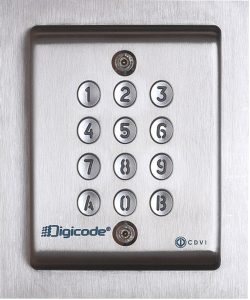
Programs can also use cameras to monitor and record the entrances of the building, common spaces, hallways, classrooms, and outdoor spaces. Alarms and panic buttons are also something programs can consider using for added protection (and alarms protect the grounds even after hours of operation).
The front desk/entrance should be staffed with someone who can check each person entering to ensure they have been authorized to have access by matching their ID to the child’s record of authorized persons. Sign-in sheets should be used to document who is dropping each child off and who has picked them up. It is important to note that, unless the program has received a court order limiting the parent’s rights to custody, children cannot be kept from a parent.
Response to Unauthorized Person’s Attempt to Pick Up Child
If an individual who is not on file as authorized to pick up the child attempts to take a child, or if the individual does leave with the child, 911 (police) should be called. Describe to the 911 operator/police:
- The name of the person (if known)
- A physical description of the person
- A description of their car (if driving)
- The direction they left
- A physical description of the child
Response to Pick-up by an Authorized Individual who Appears Unwell/Intoxicated
Educators cannot prevent an authorized individual from taking a child. Only a Children’s Aid Society or a court order can do so.
If educators have reason to believe that the child, the adult, or the general public may be at risk of injury, they should:
- Offer to call a cab/ride hailing service or another individual authorized to pick up the child.
- Document the incident and report it to the Children’s Aid Society.
- Call Police if the individual is driving and provide a description of the car, the license plate number, and the probable destination, if known.
Emergency Management
In Ontario, early learning and childcare programs are required to have policies and procedures for managing emergencies.
LICENSING REQUIREMENTS: O. Reg 137/15: GENERAL
68.1 (1) In this section,
“emergency” at a child care centre means an urgent or pressing situation in which immediate action is required to ensure the safety of children and adults in the child care centre. O. Reg. 126/16, s. 42.
(2) Subject to subsection (3), every licensee shall ensure that each child care centre it operates has written policies and procedures regarding the management of emergencies that,
(a) set out the roles and responsibilities of staff in case of an emergency;
(b) require that additional support, including consideration of special medical needs, be provided in respect of any child or adult who needs it in case of an emergency;
(c) identify the location of a safe and appropriate off-site meeting place, in case of evacuation;
(d) set out the procedures that will be followed to ensure children’s safety and maintain appropriate levels of supervision;
(e) set out requirements regarding communications with parents;
(f) set out requirements regarding contacting appropriate local emergency response agencies; and
(g) address recovery from an emergency, including,
(i) requiring that staff, children and parents be debriefed after the emergency,
(ii) setting out how to resume normal operations of the child care centre, and
(iii) setting out how to support children and staff who may have experienced distress during the emergency. O. Reg. 126/16, s. 42.
(3) Despite subsection (2), a licensee is not required to have emergency management policies and procedures described in that subsection if,
(a) the child care centre is located in a school, the licensee uses or adopts the school’s emergency management policies and procedures, and those policies and procedures address the same matters as described in subsection (2); or
(b) the licensee is otherwise required to have a plan that addresses the same matters as described in subsection (2). O. Reg. 126/16, s. 42. (O. Reg. 137/15: GENERAL)
Emergencies often happen suddenly and can be devastating to programs and communities. Emergency preparedness is the process of taking steps to ensure your early learning and childcare program is safe before, during, and after an emergency. Whether a natural disaster such as a tornado hits or a human-caused emergency such as the appearance of a violent intruder occurs, educators need to know how to respond quickly and appropriately to situations that could happen. It’s important for every program to create an emergency preparedness plan specific to their location, building, and grounds.
Early learning and childcare programs play an important role in supporting children and families in their local communities before, during, and after an emergency through three phases of emergency management:
- Preparedness—Takes place before an emergency. It includes being informed about any likely emergencies in your area; mitigating any existing concerns at your facility that could make an emergency worse; making plans to respond to emergencies before they happen; and building, maintaining, and updating supply kits you will take or keep with you during an emergency.
- Response—Begins the moment you are alerted to an impending emergency and continues as the emergency occurs.
- Recovery—Happens as soon as the emergency is over, when efforts are focused on food, water, shelter, safety, and the emotional needs of those affected. Recovery is also the process of rebuilding your program and returning to normalcy after an emergency, which is why it can last hours, weeks, months, or even years in the most extreme cases.
Preparedness
Ensuring you are prepared and ready for everyday activities is essential, and it is something you do every day in your program. Preparing and planning for emergencies is no different.
You will need to consider the types of emergencies your program could experience. What types of emergencies have previously occurred in your area? Is your program in a flood zone or an area commonly threatened by wildfire? Do you experience severe weather events? Is there a history of violence in your community? Here are some possible emergencies to consider:
- Tornado
- Earthquake
- Hurricane
- Flooding
- Tsunami
- Thunderstorm
- Building Fire/Wildfire
- Active Shooter/Violent Intruder
- Blackout/Power Outage
- Extreme Heat
- Winter Storm/Extreme Cold
- Landslide/Mudslide
- Volcanic Eruption
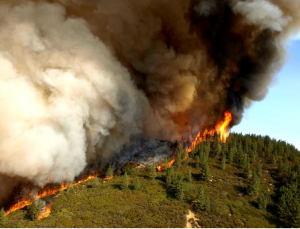
Your emergency plan should address all aspects of your early learning and childcare program, including the number and ages of enrolled children and any special health care needs or concerns of children and staff. While developing your emergency plan, use community resources for different perspectives and recommendations on preparedness, response, and recovery efforts. These resources can include but are not limited to:
- Childcare health consultants
- Mental health consultants
- Childcare resource and referral agencies (CCR&Rs)
- First responders, such as fire, law enforcement, and emergency medical personnel
- Provincial childcare licensing authority
- Public Health Units
- School district personnel if your program is located within a school
- Community physicians who are disaster experts
Making Your Emergency Response Plan
Working together and communicating what to do during an event is essential. Understanding everyone’s role during an emergency before the emergency occurs helps make the response procedure quicker and more efficient. Establishing responsibilities can be addressed during training sessions and planning meetings before an emergency or drill, to ensure staff are comfortable with the procedures.
Types of Emergency Responses
There are many types of emergencies. The key to remember is that each is a method to put effective barriers between you and a threat. The difference is in the types of threats and what kind of barrier is called for.
- Evacuating is a means to leave a dangerous situation or area (e.g., because of a fire).
- Sheltering in place is the use of a structure and its indoor atmosphere to temporarily separate you from a hazardous outdoor atmosphere (e.g., tornadoes, earthquakes, severe weather, landslides, or debris flow). It entails closing all doors, windows, and vents and taking immediate shelter in a readily accessible location.
- A lockdown is a shelter-in-place procedure that is used in situations with intruders or emergencies that involve potential violence. Lockdown requires children and adults to shelter in a safe room, lock doors, and remain quiet until the event is over.
Responding to Fires and Earthquakes
Earthquake Response – Drop, Cover, and Hold On
To be prepared to respond when there is an earthquake, educators should identify safe places. A safe place could be under a sturdy table or desk or against an interior wall away from windows, bookcases or tall furniture that could fall on educators and children. The shorter the distance to move to safety, the less likely that someone will be injured.
Everyone should practice drop, cover, and hold on. Have children go under a table (or desk if school-age) and hold on to one leg of the table or desk. Have them protect their eyes by keeping their head down.

If an earthquake occurs inside, everyone should drop, cover, and hold on until the shaking stops. Educators should then check everyone for injuries and look for things that may have fallen or broken that may now be a hazard (including fire). If evacuation is necessary, everyone should use stairs. If an earthquake occurs when people are outdoors, they should stay outside, moving away from buildings, trees, streetlights, and overhead lines, crouching down, and covering their heads. Many injuries occur within ten feet of the entrance to buildings. Bricks, roofing, and other materials can fall from buildings, injuring persons nearby. Trees, streetlights, and overhead lines may also fall, causing damage or injury.
Fire Response
Programs should have clear escape routes drawn on floor plans that note all doors, windows, and potential barriers. Every room should have two escape routes, which should be always kept open/accessible. And the evacuation site (and a backup evacuation site/temporary shelter) should be identified. These plans should be posted in every room and all program staff and families should be familiar with these (and regularly practice them). If a fire occurs, 911 should be called immediately. A designated staff person should get the current record of the attendance and the emergency contact information for all the children. As the children and staff evacuate, each should be noted so that no one is left behind. No one should go back into the building once it has been evacuated. Everyone should proceed to the evacuation site or temporary shelter. For children that cannot yet walk (infants, toddlers, or children with mobility impairments) a large wagon, or emergency crib on wheels, or similar equipment can be used for evacuation.
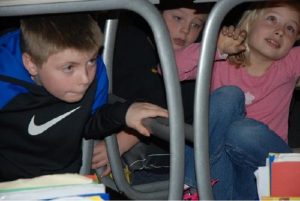
Building an Emergency Kit
Building an emergency supply kit is an important part of preparedness. This kit ensures that your program has sufficient supplies and food if you and the children need to shelter in place or evacuate in an emergency for at least 72 hours. Make sure that all items are up to date and not expired. Consider appointing someone to be responsible for routinely checking expiration dates of the food in your kit. Here are some items you might consider including in your kit:
- Emergency contact information for children and staff
- Attendance sheet
- Facility floor plan with evacuation routes outlined
- Printed directions to evacuation sites
- Medication list with dosing instructions for each child who takes medication
- Battery- or hand-powered weather radio
- Battery-powered walkie-talkies to communicate with staff
- Fully charged cell phone and charger
- Flashlight and batteries
- First aid kit
- Diapers, toilet paper, diaper wipes
- Sanitary wipes and hand sanitizer
- Non-latex medical gloves
- Dry or canned infant formula
- Bottled water
- Non-perishable food
- Work gloves
- Paper towels
- Blankets
- Alternative power source for electric medical devices (if needed)
- Whistle
- Wrench or pliers for the director to turn off utilities
- Matches in a waterproof container
- Games or activities to entertain children
Practice Your Plan
Practicing your emergency plan in advance helps everyone respond quickly and appropriately when an emergency arises. You won’t know if the plan works unless you try it out, so practice with all children and adults. If you have enrolled children or staff with special health care needs or disabilities, address these specific needs with community partners during practice.
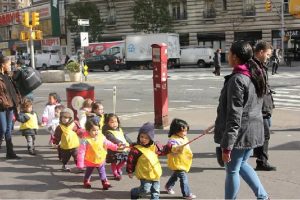
Regular emergency drills, both announced and unannounced, help everyone become familiar with emergency procedures and activities. This can reduce panic and fear during an actual emergency, freeing participants to focus on how to evacuate, shelter in place, or lockdown.
LICENSING REQUIREMENTS: O. Reg. 137/15: GENERAL
68. (1) Every licensee shall ensure that in respect of each child care centre it operates,
(a) a written procedure approved by the local fire chief is established with respect to the duties of each member of the staff of the child care centre in the event of a fire;
(b) each staff member is instructed as to his or her responsibilities in the event of a fire before commencing work for the first time;
(c) the written procedure referred to in clause (a) is posted in a conspicuous place in each room in the child care centre that is used for the care of children;
(d) fire drills are conducted in accordance with subsection (2);
(e) a written record is kept of all fire drills, all tests of the fire alarm system and all tests of fire protection equipment and that each record is kept for at least 12 months from the date of the drill or test; and
(f) there is a designated place of shelter in the event the child care centre must be evacuated due to an emergency.
(2) For the purposes of clause (1) (d), the following rules apply:
- A fire drill shall be conducted in respect of every child care centre, except a child care centre described in paragraph 2, at least once a month in accordance with Ontario Regulation 213/07 (Fire Code) made under the Fire Protection and Prevention Act, 1997.
- A total evacuation fire drill shall be conducted in respect of every child care centre or part of every child care centre that is operated in a school and that provides services only to children who are pupils of a school board, including a third party program operated under section 259 or 259.1 of the Education Act, in accordance with Ontario Regulation 213/07,
i. at least three times during each fall and spring term the school is in operation, and
ii. at least three times or at least once a month, whichever is less, during the summer term the program is in operation. O. Reg. 137/15, s. 68 (2); O. Reg. 254/19, s. 16. (O. Reg. 137/15: GENERAL)
Reunification Procedures
An effective method of reuniting children with their parents and guardians after an emergency is an often-overlooked component of an emergency plan, but it is very important. Including up-to-date emergency contact information for each child in your emergency kit can help provide structure around this process. Reunification procedures that should be communicated to families:
- Evacuation or shelter-in-place locations
- What the program will do during a lockdown response
- What families should do during a lockdown response
- Who will contact families before, during, and after an emergency
- How families will be contacted (e.g., text, email, phone call)
- Procedures if a child needs to be transported for medical care (e.g., who will accompany the child, where they will go)
It is important for programs to have procedures in place if children cannot be reunited with their families immediately. Roads close, care gets delayed, and work shifts go into overtime during emergencies for parents/guardians working in hospitals or as first responders. Having a plan in case you need to take care of a child overnight is a critical part of your reunification procedures.
Response
The goals of the response phase are to:
- Determine that an emergency is occurring
- Determine appropriate response (evacuation, shelter in place, or lockdown)
- Activate the emergency response plan
- Maintain communication with all staff and first responders
- Establish what information needs to be communicated to staff, educators, assistants, children, families, and the community
- Provide emergency first aid as needed
Refer to Figure 6 to see the process responses should follow.
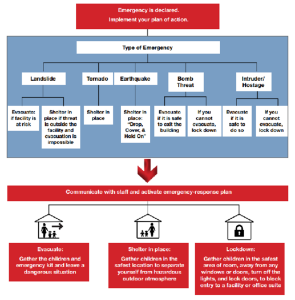
Response is directly related to preparedness—the more you prepare and practice your emergency response, the more efficient your response will be. After performing an emergency all involved parties should reflect upon how the drill went and provide feedback on what worked and what did not work. Updates and revisions to the plan and procedures should be made based on that feedback. Educators should also discuss the drill with the children afterward, so the children can ask questions and understand what happened.
Recovery
The recovery phase refers to the actions taken from the time the emergency ends until the needs of staff, children, and families are met. It includes helping affected families resume their daily activities and helping all those affected cope with the aftermath of the emergency. Recovery can last for a few days, weeks, months, or even years. The goals of the recovery phase are to:
- Rebuild your facility if necessary and restore services as quickly as possible.
- Meet the needs (physical, health, emotional) of children, families, and staff.
- Provide a supportive and caring environment that brings normalcy back into children’s lives.
Incorporating recovery resources into your emergency-preparedness plan can help you reach these goals more quickly while providing mental health and emotional support to children, families, and staff.
Reunification
Safely returning children to their families after an emergency begins to bring children and families back to normalcy. Preparing for this by keeping up-to-date emergency contact information for each child in your emergency kit can help provide structure around this process. Make sure you are communicating with families throughout the emergency, if possible. This communication may help the reunification process begin more quickly, as families may be able to safely pick up their children sooner.
Mental Health and Emotional Needs
Mental health support is a high priority after an emergency. By offering a safe place and resources like mental health consultants, early learning and childcare programs support children, families, and staff coping with fear, anger, and grief and help them resume their lives in a healthy way.
Keep in mind the following:
- Everyone who sees or experiences an emergency is affected by it in some way.
- It is normal to feel anxious about your own safety and that of your family and close friends.
- Profound sadness, grief, and anger are normal reactions during or after an emergency.
- Everyone has unique needs and diverse ways of coping.
- Acknowledging feelings and focusing on your strengths and abilities can help recovery.
- Difficult memories of the disaster can be triggered by certain loud noises, weather events, or news clips from the emergency. This may be true even years later.
Important Things to Remember
- An emergency is a situation that poses an immediate risk to health, life, property, or environment. Most emergencies require urgent intervention to prevent a worsening of the situation. Some emergencies will be obvious (such as natural disasters), but others will require educators to decide if it truly is an emergency.
- Emergency preparedness is the process of taking steps to ensure your early learning and childcare program is safe before, during, and after an emergency.
- If an individual who is not on file as authorized to pick up a child attempts to take a child, or if the individual does leave with the child, 911 (police) should be called.
- Educators cannot prevent an authorized individual who appears unwell or intoxicated from leaving the program with a child. If the individual is driving, 911 (police) should be called.
Resources for Further Exploration
Emergency Preparedness for Children (Government of Canada)
Ontario Child Care Providers First Aid Training (FirstAid4U.ca)
Standard Child Care First Aid & CPR (Red Cross)
Wildfire Evacuation information for Indigenous Peoples (Government of Canada)
Your Guide: Preparing Child Care for Emergencies (Niagara Region Community Services)
References
- Canadian Red Cross (n.d.). First Aid Kit. https://www.redcross.ca/training-and-certification/first-aid-tips-and-resources/first-aid-tips/kit-contents
- O. Reg. 137/15: GENERAL. https://www.ontario.ca/laws/regulation/150137#BK83

